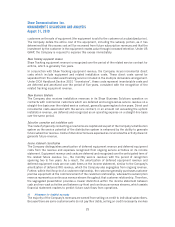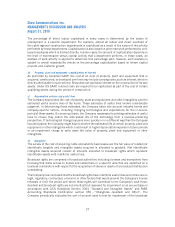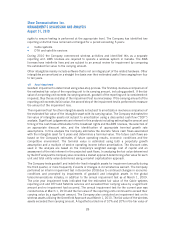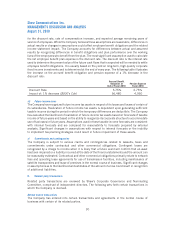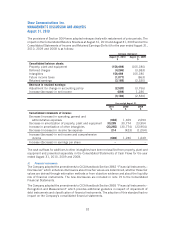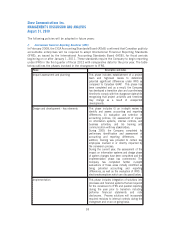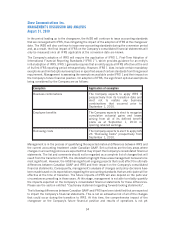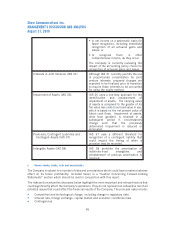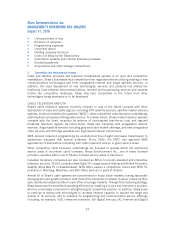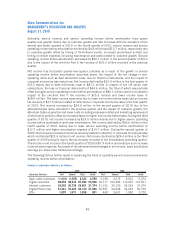Shaw 2010 Annual Report Download - page 39
Download and view the complete annual report
Please find page 39 of the 2010 Shaw annual report below. You can navigate through the pages in the report by either clicking on the pages listed below, or by using the keyword search tool below to find specific information within the annual report.
determinable. Management expects to complete this assessment in time for parallel recording of
financial information in accordance with IFRS beginning September 1, 2010.
The Company continues to monitor and assess the impact of evolving differences between Canadian
GAAP and IFRS, since the IASB is expected to continue to issue new accounting standards during
the transition period. As a result, the final impact of IFRS on the Company’s consolidated financial
statements can only be measured once all the applicable IFRS at the conversion date are known.
Differences with respect to recognition, measurement, presentation and disclosure of financial
information are expected to be in the following key accounting areas:
Key accounting area Differences from Canadian GAAP, with
potential impact for the Company
Presentation of Financial Statements
(IAS 1)
IAS 1 requires additional disclosures in the
notes to financial statements.
Share-based Payments (IFRS 2) IFRS 2 requires cash-settled awards to
employees be measured at fair value at
the initial grant date and re-measured at
fair value at the end of each reporting
period.
IFRS 2 also requires the fair value of stock-
based compensation awards to be
recognized using a graded vesting method
based on the vesting period of the options.
Business Combinations (IFRS 3R) IFRS 3R requires acquisition-related and
restructuring costs to be expensed as
incurred and contingent consideration
recorded at its fair value on acquisition
date; subsequent changes in fair value of
contingent consideration classified as a
liability is recognized in earnings.
Income Taxes (IAS 12) IAS 12 recognition and measurement
criteria for deferred tax assets and
liabilities may differ.
Employee Benefits (IAS 19) IAS 19 requires past service costs of
defined benefit plans to be expensed on
an accelerated basis, with vested past
service costs immediately expensed and
unvested past service costs amortized on
a straight line basis until benefits become
vested.
IAS 19 has an accounting policy choice that
allows the Company to recognize actuarial
gains and losses using one of the following
methods:
• in net income using the corridor
approach amortized over the expected
average remaining working lives,
35
Shaw Communications Inc.
MANAGEMENT’S DISCUSSION AND ANALYSIS
August 31, 2010


